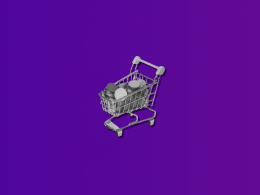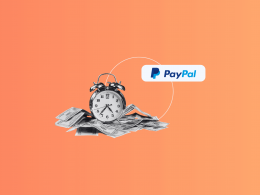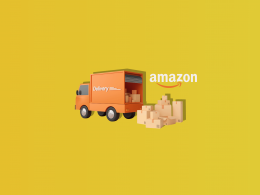In the dynamic world of e-commerce, offering various reliable and convenient payment methods is essential to ensure a smooth customer experience and foster business growth. Two of the most prominent payment platforms that businesses tend to leverage are Square and PayPal. Each offers unique benefits and can be integrated directly or indirectly into an e-commerce business, catering to diverse payment preferences and expanding your customer reach.
This guide will take you through the intricacies of the Square to PayPal connection, explaining its benefits, how to implement it, and how it can contribute to the growth and efficiency of your business.
Introduction to Square and PayPal
Both Square and PayPal platforms offer powerful solutions for processing online payments, each with its unique strengths. Square, known for its distinctive card reader and robust point-of-sale system (POS), excels in processing physical credit card transactions, making it an excellent choice for brick-and-mortar retailers.
A brief overview of Square
Square is a financial services and digital payments company that revolutionized payment processing for small businesses and individuals by making it simpler and more accessible.
Square’s flagship product is a small, square-shaped credit card reader that plugs into a smartphone or tablet’s headphone jack, turning the device into a mobile point-of-sale system. This innovation has enabled small businesses and even individual sellers to accept card payments anywhere, anytime, leveling the playing field with larger businesses.
Since its launch, Square has expanded its product and service offerings significantly. Today, the company provides a range of business software, hardware, and payment services. These include a full point-of-sale system, invoicing and payroll services, and business loans through Square Capital. Square’s ecosystem of services is designed to serve as an all-in-one solution for business owners, providing everything they need to start, run, and grow their businesses.
In recent years, Square has also entered the consumer market with services like Square Cash, a peer-to-peer payment app similar to Venmo (owned by PayPal), and even offering banking services. With its broad range of products and services, Square continues to be a significant player in the financial services and digital payments landscape.
Square’s role in online transactions
Square has played a vital role in making card payment acceptance accessible for businesses of all sizes. Before Square, small businesses and individual sellers often struggled with accepting card payments due to high costs and complex setup processes. Square’s easy-to-use hardware and software solutions changed this, allowing businesses to accept card payments anywhere, anytime. Additionally, through its Square Online platform, businesses can set up an online store, manage inventory, and process online payments seamlessly, enabling them to reach customers beyond their physical location.
Want to learn more about Square? Read our articles about the Square Cash app, Square Point Of Sale (POS), or Square Virtual Terminal.
What is Square Online?
Square Online is a comprehensive e-commerce solution provided by Square, designed to help businesses build an online presence and sell products and services on the internet. This platform is beneficial for businesses of all sizes, whether they are looking to establish a first-time online presence or augment their existing retail setup with an online storefront. Square Online stands out with an array of key features that provide businesses with a robust platform for their online presence
Square Online: e-commerce platform functionalities
Firstly, Square Online comes equipped with an intuitive website builder. This tool facilitates the creation of professional websites without the necessity for in-depth technical knowledge. It provides a wide selection of templates and design elements, allowing businesses to tailor their websites to their branding and style.
In addition to this, Square Online offers an extensive suite of e-commerce functionalities. These include inventory management, order fulfillment, and shipping, along with customer relationship management tools. These features work in tandem to streamline your online sales process.
Square Online’s functionality can be further enhanced through integration with various third-party applications and services. This allows businesses to customize their online store with additional features and services.
Square Online: payment processing
An integral part of Square Online is its seamless integration with Square’s payment processing system. This ensures that businesses can conveniently accept a diverse range of payment methods, including credit and debit cards.
Furthermore, Square Online is designed to be smoothly integrated with Square’s Point of Sale (POS) system. This integration enables the synchronization of inventory and sales data between offline and online operations, maintaining consistency and accuracy across platforms.
Introduction to the PayPal payment system
PayPal is a worldwide online payment system that supports online money transfers. PayPal serves as an electronic alternative to traditional paper methods like checks and money orders, and today, it is one of the world’s largest online payment companies.
The company’s early growth was driven in part by its prominent use on the eBay auction site, but PayPal’s services have since expanded to include a wide range of financial transactions. These include but are not limited to online purchases, invoice payments, peer-to-peer money transfers, and providing business users with a suite of services like lending and the ability to accept credit card payments.
PayPal’s compatibility with most e-commerce platforms and shopping carts makes it an easy addition to any online store. This easy integration makes PayPal a convenient payment option that can greatly enhance the online shopping experience.
The significance of PayPal in the e-commerce industry
PayPal has essentially been a trailblazer in the world of online payments. It has allowed businesses and individuals to send and receive payments across the globe, eliminating traditional geographical barriers. It provides a secure platform for transactions, reducing the risk of online fraud. PayPal also made it possible to pay without directly sharing credit card information, thereby increasing consumer confidence in online shopping.
Furthermore, PayPal’s “One Touch” feature has simplified the checkout process for consumers, reducing cart abandonment rates, and therefore indirectly contributing to increased sales for businesses.
PayPal: facilitating online transactions
PayPal, a prevalent online payment system, offers a myriad of features beneficial to businesses across the spectrum. Its wide range of utilities makes it an indispensable tool for streamlining business transactions.
One of PayPal’s most significant offerings is its capability to facilitate online transactions. This feature empowers businesses to accept various payment methods such as credit cards, debit cards, and PayPal balance transfers. By doing so, it provides a seamless shopping experience for customers worldwide, potentially leading to increased sales and revenue.
One of PayPal’s standout features is its facilitation of cross-border payments. This feature enables businesses to sell their products or services to customers globally. PayPal handles the complex process of currency conversion, making international transactions a breeze for businesses looking to expand their market reach.
In terms of security, PayPal offers a Seller Protection program. This program protects businesses against potential fraudulent transactions, chargebacks, and reversals, ensuring that businesses can operate with a degree of confidence and security.
PayPal: online payments management
In addition to facilitating transactions, PayPal also simplifies the process of invoice creation and management. Businesses can easily generate and dispatch professional invoices directly to their customers. With PayPal’s tracking capabilities, businesses can keep an eye on unpaid invoices and issue timely reminders, making the entire process of invoice management efficient and hassle-free.
For businesses operating on a subscription model, PayPal’s recurring payment management service is a boon. It can seamlessly handle recurring payments, making it an ideal choice for businesses like digital publications, software-as-a-service (SaaS) providers, and subscription box services.
PayPal: offline services
Moreover, PayPal is not confined to online businesses; it extends its services to physical stores as well. With PayPal Here, brick-and-mortar stores can accept in-person payments through mobile card readers that connect with a smartphone or tablet.
Learn more about a breakdown of seller PayPal fee rates with our guide.

Square and PayPal: Brief comparison
Square and PayPal, as two prominent payment processors, each present unique strengths and features. The right payment processor for your business depends on various factors such as your business model, the volume and size of your transactions, the need for physical POS systems, and the kind of customers you serve. It’s important to consider these aspects and possibly consult with a financial advisor to determine which platform is most suited to your business needs.
Here is a brief comparison of the main features of both payment gateways.
Point of Sale (POS) systems
- Square offers a range of hardware options, including a free mobile card reader, register systems, and a standalone terminal.
- PayPal’s hardware includes mobile card readers as well as Chip and Tap system.
E-commerce integration
- Square offers its own e-commerce platform, Square Online. It also integrates with a variety of other e-commerce platforms.
- PayPal integrates with a large number of e-commerce platforms and shopping carts.
Payment types
- Square accepts all major credit cards, gift cards, and contactless payments.
- PayPal accepts all major credit cards, PayPal payments, and Venmo in the U.S.
Payout time
- Square’s standard payout time is the next business day, but it offers a service for instant transfers for an additional fee.
- PayPal provides instant access to funds, which can be transferred to a bank account or spent using a PayPal Business Debit MasterCard.
Invoicing
- Both Square and PayPal offer the ability to create and send custom invoices.
The role of Square and PayPal in facilitating payments for small businesses
Square and PayPal each offer distinctive benefits to e-commerce merchants, and using them together can provide an even more comprehensive payment solution.
Advantages of Square
Square brings considerable value to the table. Notably, its proprietary e-commerce platform, Square Online, enables merchants to rapidly set up an online store. The integrated Point of Sale (POS) systems offered by Square simplify the management of inventory and orders by syncing with your online store.
Furthermore, Square has a transparent, flat-rate pricing model, which can be easier for some businesses to comprehend and manage. For merchants who also conduct in-person sales, Square provides a variety of hardware options like card readers and terminals. Additionally, Square delivers an array of integrated business services such as payroll, marketing, customer loyalty programs, and appointment scheduling, all of which can be harmonized with your e-commerce operations.
Advantages of PayPal
On the other hand, PayPal offers its unique advantages. Its global reach enables merchants to comfortably accept international payments. As a longstanding leader in the online payment industry, PayPal carries a trust factor that can increase conversion rates.
PayPal also offers an express checkout feature, allowing customers to finalize their purchase without leaving the merchant’s site, which can potentially reduce cart abandonment rates. Moreover, PayPal provides advanced security measures and fraud protection tools to ensure secure transactions. Apart from credit card payments, PayPal can also process payments from PayPal accounts and, in the U.S., Venmo payments.
Combined approach: Advantages of integrating Square and PayPal
By leveraging both Square and PayPal, merchants can reap additional benefits. Offering both payment methods caters to a broader range of customer payment preferences, which can lead to increased sales. Having a second payment gateway also serves as a backup in case one faces technical issues, thus minimizing the risk of losing sales. Finally, using both platforms allows merchants to avail themselves of the unique features of each, creating a well-rounded payment solution.
However, it’s crucial for businesses to assess their specific needs and customer preferences while deciding on their payment solutions. As Square and PayPal continuously evolve, staying up-to-date with their latest offerings is key to optimizing your e-commerce payment operations.
Expanded customer reach
PayPal is used globally by millions of customers. By accepting PayPal as a payment option on your Square Online site or on third-party platforms, you can expand your business to reach a wider customer base.
Flexibility and convenience for customers
Different customers have different preferred methods of payment. By offering both Square and PayPal as options, you give your customers the flexibility to choose the method that’s most convenient for them.
Consolidated financial management
When using a third-party platform that integrates with both Square and PayPal, all your financial data is consolidated in one place, making it easier to manage your sales, track revenues, and reconcile your accounts.
Enhanced trust
Both Square and PayPal are trusted by consumers around the world. Offering these payment options can enhance your business’s credibility and can increase the likelihood of customers making a purchase.
The basics of Square integration with PayPal
Both Square and PayPal are separate payment processing systems that businesses typically use independently based on their specific needs. However, both platforms do offer APIs that allow you to integrate their payment processing capabilities into custom applications. Also always use third-party apps to manage the integration indirectly.
If your goal is to accept payments through both Square and PayPal, you might consider using a third-party e-commerce platform that supports both payment processors. Such platforms could provide a more seamless solution, as they manage the integration with both Square and PayPal behind the scenes, allowing you to focus on your business operations.
Always remember to make sure any solution you choose complies with all relevant laws and regulations, especially those related to data safety and financial transactions. It is also a good idea to consult with a professional if you’re unsure.
Square Online integration with PayPal
If you’re operating a shop on Square Online incorporating PayPal as a payment gateway can significantly broaden your global customer reach. This is particularly beneficial for potential customers whose card types might not be compatible with your site, thereby increasing the possibility of more purchases and revenue. It’s worth exploring how to accept various payments on Square Online to fully optimize your online payment options.
In order to accept payments through PayPal, it is crucial to set up a PayPal Business account. If you already have a personal PayPal account, it can be conveniently upgraded to a Business account. Alternatively, you can also choose to create a new PayPal Business account altogether.
However, it’s important to note that not all services on your Square Online site can be paid for with PayPal. For instance, the online scheduling functionality powered by Square Appointments does not currently support PayPal integration. Likewise, the Square Gift Cards section on your Square Online site also lacks PayPal integration.
In terms of local delivery, Square acts as an intermediary between your business or the local delivery provider and your customer, thus it doesn’t support third-party payment providers such as PayPal. That said, if PayPal is connected to your website, customers can still utilize it for orders that are scheduled for shipping or collection.
How good are Square and PayPal at integrating with other systems?
Both Square and PayPal have strong capabilities when it comes to integrating with other systems, particularly in the realm of e-commerce, accounting, and point-of-sale (POS) systems. Here’s a look at how both fare.
Square integrations
Square integrates seamlessly with a wide array of platforms and applications. It offers its own e-commerce solution, Square Online, which allows for easy setup and operation of an online store. In addition, it integrates with popular e-commerce platforms such as WooCommerce, Ecwid, Wix, and others.
For accounting and bookkeeping, Square integrates with QuickBooks, Xero, Zoho Books, and more. Its POS integration is also robust, with compatibility with various POS systems and custom integration capability through the Square APIs and SDKs for more personalized needs.
PayPal integrations
PayPal, being a global payment platform, offers vast integration possibilities. In terms of e-commerce, PayPal integrates with a multitude of platforms, including Shopify, WooCommerce, Magento, BigCommerce, and more, providing a convenient payment option for online businesses.
PayPal also integrates well with popular accounting software like QuickBooks, Xero, and FreshBooks, allowing for streamlined financial management. As for POS systems, PayPal offers PayPal Here which integrates with many retail POS systems.
How to connect Square and PayPal using Synder
Synder is a financial management software that can help you synchronize your sales transactions across various platforms, including Square and PayPal. However, it does not directly integrate Square with PayPal in terms of transferring payments from one to the other or vice versa. Instead, it allows for automated bookkeeping by syncing your transactions from both Square and PayPal (as well as other platforms) into accounting software such as QuickBooks or Xero.
Here’s a basic overview of how to connect your Square and PayPal accounts to Synder.
- Create a Synder account: Visit the Synder website and sign up for an account. They offer a free trial period for you to get started.
- Connect Square and PayPal to Synder: From the Synder dashboard, navigate to the “Add payment platform” section. Select Square from the list and follow the on-screen instructions to connect your Square account. Repeat the same process for PayPal.
- Configure your settings: Once your accounts are connected, you can customize how Synder syncs your transactions. For instance, you might specify which account in your accounting software should be used for income from Square and which should be used for PayPal.
- Begin syncing transactions: With everything set up, Synder can now automatically import your transactions from Square and PayPal into your accounting software, helping to keep your books up to date.
How Synder helps with Square and PayPal payments
Synder as a comprehensive financial management tool proves exceptionally beneficial for businesses using Square, PayPal, or both. It provides various functionalities designed to enhance and streamline financial operations.
Automated bookkeeping
Synder’s ability to automatically import and categorize transactions from Square and PayPal into your accounting software is one of its core features. This automation not only helps conserve valuable time but also ensures accuracy, eliminating the chance of human errors that can occur during manual data entry.
For businesses employing both Square and PayPal, Synder offers the capability to synchronize and manage transactions from both platforms. This offers a consolidated view of your financial transactions, making the management of your finances more organized and less cumbersome.
Synder provides real-time updates to your financial reports, giving you an immediate and up-to-date snapshot of your business’s financial health. This can be instrumental in making timely, informed financial decisions.
Facilitating reconciliation
Synder simplifies the reconciliation process by accurately matching transactions with the corresponding entries, such as invoices or sales receipts. This guarantees your books remain balanced and accurate, providing a reliable reflection of your financial standing.
Processing fees and multicurrency support
Synder also aids in understanding your processing costs by tracking the fees charged by Square and PayPal for every transaction. If you operate internationally, Synder’s support for multi-currency transactions can be particularly useful, easing the management of global sales.
Bottom line
By integrating Synder with Square, PayPal, and your accounting software, you can automate and streamline your financial management processes, reduce the risk of errors, and gain a more comprehensive and accurate understanding of your business finances.
Conclusion: Summing up the benefits of integrating Square with PayPal for small businesses
Integrating PayPal and Square into a business operation can drastically transform the payment landscape of an organization. These platforms not only offer a comprehensive suite of payment solutions but also help businesses navigate the digital world with ease, ultimately leading to increased sales and customer satisfaction.
By integrating both platforms, businesses can cater to a wider range of customer preferences, streamline their operations, and safeguard their transactions. Whether it’s through direct integration as a payment gateway or indirect connection through other software, leveraging the synergies of Square and PayPal can significantly enhance a business’s digital footprint.
As the digital marketplace continues to evolve, businesses that adapt and harness the power of these innovative payment platforms will be better equipped to meet their customers’ needs and thrive in the ever-changing landscape of e-commerce.
Want to learn more? Read our articles about How does Square work and WooCommerce + Square integration.






